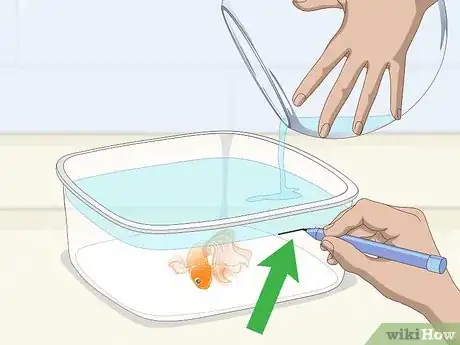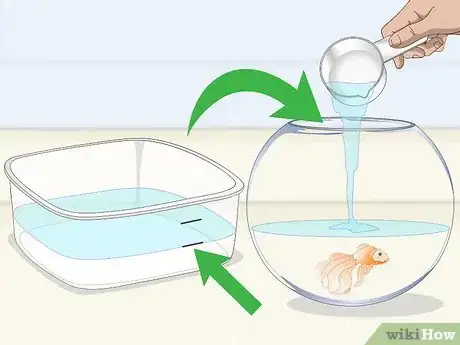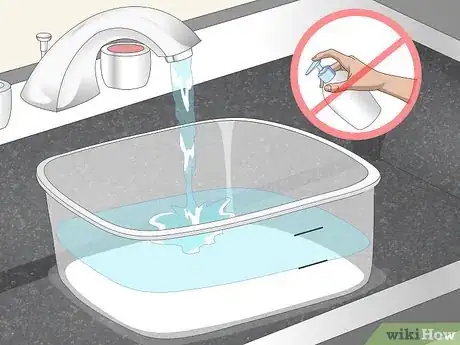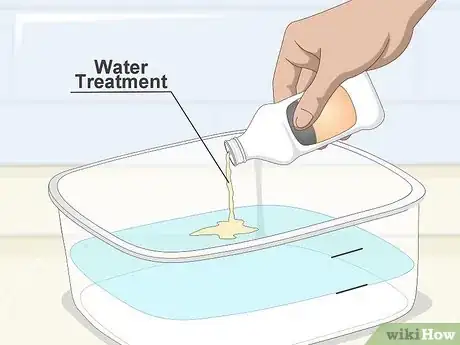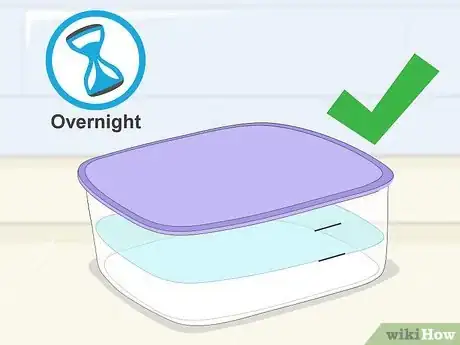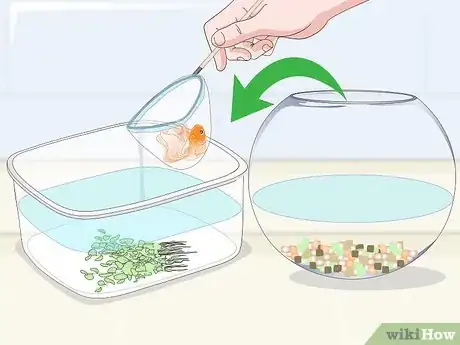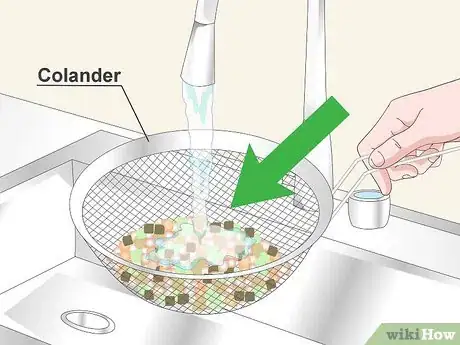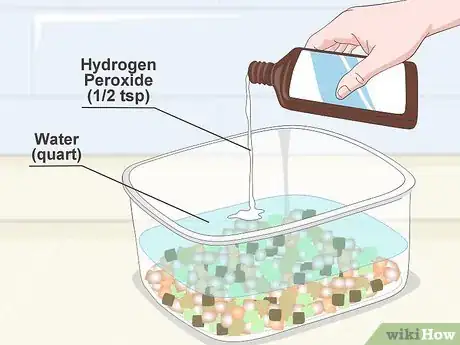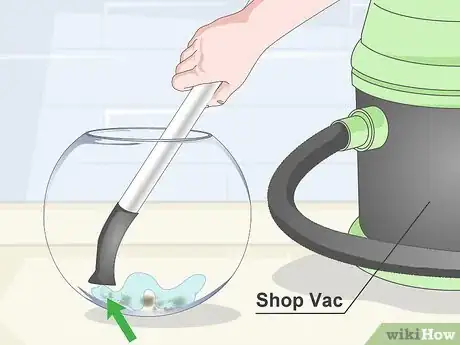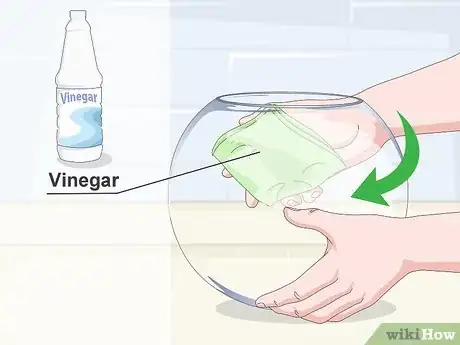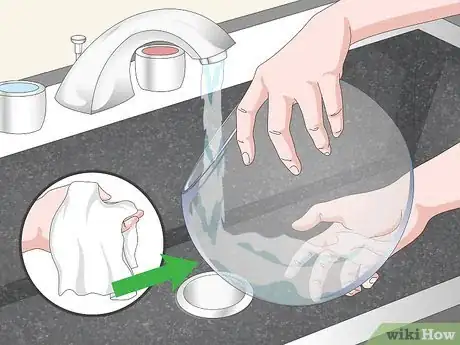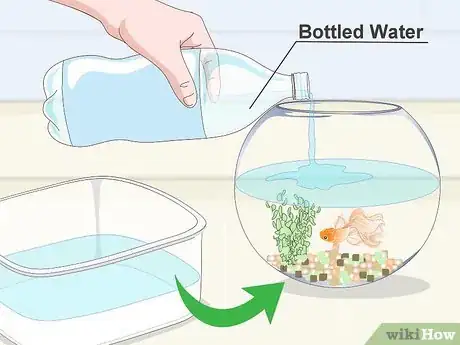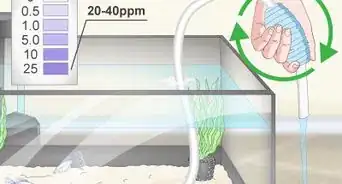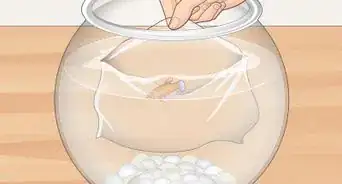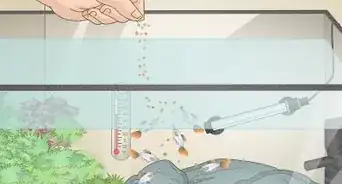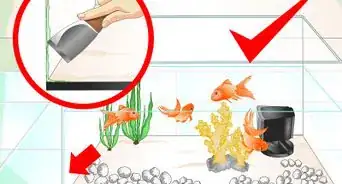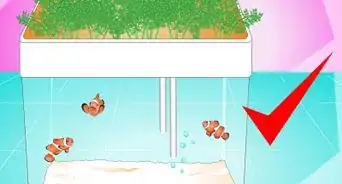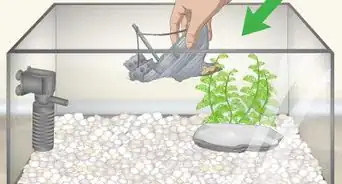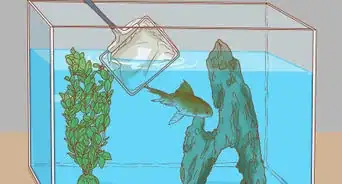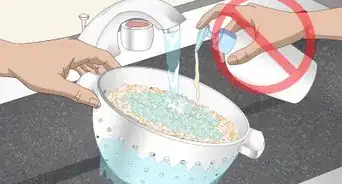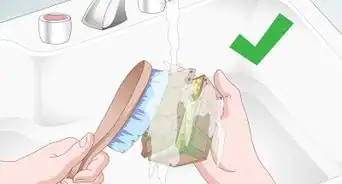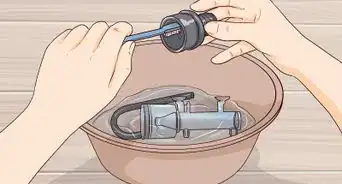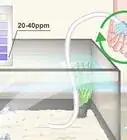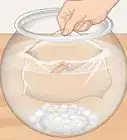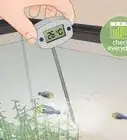This article was co-authored by Marshall Stephens. Marshall Stephens is an Aquarium Expert at Private Oceans Aquariums in West Palm Beach, Florida. Marshall has over 20 years of experience in the aquarium industry and focuses on captive-bred animals. They specialize in tropical and marine aquariums and are a contributor to the Loggerhead Marine life center in Jupiter Florida.
wikiHow marks an article as reader-approved once it receives enough positive feedback. In this case, 100% of readers who voted found the article helpful, earning it our reader-approved status.
This article has been viewed 248,045 times.
Fish bowls can add color and life to any room, but they require diligent maintenance to stay clean and keep your fish healthy. Improper care is the leading cause of pet fish distress and death. Prepare your water ahead of time, rinse inside objects, and wash the bowl itself every other day to keep your fish bowl and its residents thriving.
Steps
Preparing the Water
-
1Figure out how much water your bowl holds. In order to determine how much clean water you’ll need to prepare, you first need to gently pour the bowl's current water and the fish into a clean, soap-free bucket or container. Then, mark the water level on the outside of the bucket.[1]
-
2Figure out how much new water you’ll need. When you clean your fish bowl, you’ll need to replace 40-50% of the total volume of water that it holds. After you’ve marked the initial water level, use a clean cup to start putting the water back into your bowl. Once you’ve removed about half of the water, mark the new water level on the outside of the bucket and transfer the fish back into the bowl with a net.Advertisement
-
3Fill the clean container with fresh water. Once your fish is safely back in its bowl, rinse out the container you were just using. Don’t use soap to clean out the container, because this will be harmful to your fish. Fill the container back up to the halfway mark you made with fresh water.[2]
-
4Treat the water using a water treatment kit. At this point, read and follow the directions on the label of your water treatment kit. Add the appropriate number of drops to the water that’s in the container. You can find water treatment for fish bowl water at any major pet store. The treatment will eliminate chlorine, chloramines and other substances that are toxic to fish.
- This is a necessary step in ensuring that the water will have the proper balance of chemicals to keep your fish healthy.[3]
-
5Cover the container and let the water age overnight. Cover the container with a lid to prevent airborne contaminants from making their way into the water. Let the container sit overnight so that the water can "age" and reach room temperature.[4]
Cleaning Inside Objects
-
1Move your fish, plants, and old water from the bowl to the container. Use a net to carefully remove your fish and any live plants from the fish bowl. One by one, transport your fish and plants to the container of treated water. Pour about half of the old water into the container of treated water with the fish and plants.
-
2Filter out dirt and waste with a colander. Remove any rocks or decorations from the fishbowl, put them in a colander, and take them to a sink. Hold the colander directly under the faucet and shake it lightly from side to side as the running water filters out dirt and waste. Do this until the water underneath the colander runs clear.[5]
-
3Use hydrogen peroxide to remove algae. Add a half teaspoon (2.5 ml) of hydrogen peroxide to a quart of water (0.95 liters). Soak the rocks and decorations in this solution during the time you spend cleaning the fish bowl. Afterwards, rinse the items well with clean water.
- Hydrogen peroxide is safe for your fish to be exposed to in small amounts because after 24 hours, it decomposes into hydrogen and oxygen.[6]
Cleaning a Dirty Bowl
-
1Suck up dirt and waste with a shop vac. While your fish is in the container and the rocks and decorations are soaking in hydrogen peroxide, clean out the bowl. Use a wet/dry shop vac to suck up any remaining dirt, waste, and moisture that didn’t fall out naturally when you emptied the bowl.
- Cover the nozzle with three layers of panty hose and secure it with a rubber band if you ever need to clean the bowl quickly and you don’t have time to remove the rocks, decorations, and water first.[7]
-
2Wipe the bowl with vinegar and a cloth. Dip a clean cloth or paper towel in vinegar and scrub the fish bowl clean. Then, dip another clean cloth or paper towel in water and wipe all surfaces of the bowl again.[8]
-
3Rinse and dry the bowl thoroughly. Place the bowl under the sink faucet and rinse the inside and outside well. With a cloth that’s clean and dry, wipe the bowl dry to remove spots and ensure your fish’s safety.[9]
-
4Put everything back into the bowl and top it off with bottled water. After the bowl is clean, place the rocks and decorations back in and carefully pour the container of treated water back into the bowl. Stop about halfway through and use a net to transport the fish and live plants. Fill the fish bowl with bottled water until it reaches about 2 inches (5.08 cm) from the top.
Community Q&A
-
QuestionHow can I tell if my betta fish is male or female?
 CaeiiaTop AnswererMales have longer fins; females have shorter ones and have an egg spot. The egg spot is like a white dot underneath the betta's "chin". Males also have a "beard" (larger gills) when flaring.
CaeiiaTop AnswererMales have longer fins; females have shorter ones and have an egg spot. The egg spot is like a white dot underneath the betta's "chin". Males also have a "beard" (larger gills) when flaring. -
QuestionIf I have 2 mollys and 1 fantail goldfish in my 2 gallon size bowl, how often do I have to clean the bowl?
 Community AnswerSince you have a goldfish in the tank you should do a half water change every week if you do not have a filter. It should be fully scrubbed if it is in an unfiltered tank as goldfish produce a lot of waste. Also you should probably get a bigger tank for three fish.
Community AnswerSince you have a goldfish in the tank you should do a half water change every week if you do not have a filter. It should be fully scrubbed if it is in an unfiltered tank as goldfish produce a lot of waste. Also you should probably get a bigger tank for three fish. -
QuestionHow do I know if a goldfish is a boy or girl?
 Community AnswerCheck out this article on How to Tell if Your Goldfish Is a Male or Female.
Community AnswerCheck out this article on How to Tell if Your Goldfish Is a Male or Female.
Warnings
- Fish bowls aren’t nearly as beneficial for fish as tanks because they don't usually have a filter. Please choose wisely when deciding to get a fish bowl, as it has negative effects on the fish inside including stunting, excess in DOCs, and no biological filtration leading to ammonia spikes if the bowl misses a water change.⧼thumbs_response⧽
Things You'll Need
- Small net
- Water treatment container
- Water treatment kit
- Paper towels or washcloths
- Colander or strainer
- Bottled water
- Algae Scraper (optional)
- Vinegar
- Hydrogen Peroxide
References
- ↑ http://www.nwahomepage.com/dl365/healthy-pets/how-to-properly-clean-a-fish-bowl/644448063
- ↑ http://www.nwahomepage.com/dl365/healthy-pets/how-to-properly-clean-a-fish-bowl/644448063
- ↑ http://www.nwahomepage.com/dl365/healthy-pets/how-to-properly-clean-a-fish-bowl/644448063
- ↑ http://www.quickanddirtytips.com/pets/other-animals/how-to-easily-clean-a-fish-bowl-or-fish-tank
- ↑ http://www.petmd.com/fish/care/evr_fi_how-to-clean-fish-tank
- ↑ http://www.quickanddirtytips.com/pets/other-animals/how-to-easily-clean-a-fish-bowl-or-fish-tank
- ↑ http://www.quickanddirtytips.com/pets/other-animals/how-to-easily-clean-a-fish-bowl-or-fish-tank
- ↑ http://www.quickanddirtytips.com/pets/other-animals/how-to-easily-clean-a-fish-bowl-or-fish-tank
- ↑ http://www.quickanddirtytips.com/pets/other-animals/how-to-easily-clean-a-fish-bowl-or-fish-tank
About This Article
To clean a fish bowl, fill up a separate container with fresh water and treat it using a water treatment kit. Next, use a net to carefully transfer your fish and any live plants from the fish bowl into the container of treated water. Then, put the rocks in a colander, rinse them off, and soak them in a hydrogen peroxide solution while you clean the rest of the bowl. Finally, vacuum the bowl's interior and rinse it out thoroughly before putting the water, fish, rocks, and plants back in! For tips on making the hydrogen peroxide solution for the rocks, read on!
